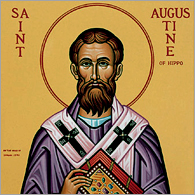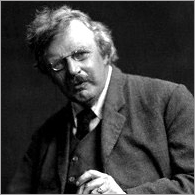 (First posted 22 December 2010)
(First posted 22 December 2010)
Jane: I don’t know what we did, but it must’ve been something dreadful.
Michael: He sent the police after us and the army and everything.
Jane: Michael, don’t exaggerate.
One thing I have noticed in reading modern geocentrist material is that so far, to a man, they materially exaggerate the nature and authority of the magisterial documents generated in the Galileo incident and, as a corollary, consistently downplay the nature and authority of the documents that have emanated from the Holy See since that time.
Fr. Brian Harrison, O.S. presents a good summary that supports what I have already laid out elsewhere:
In the case of Rome’s 17th-century insistence on geocentrism, we have a teaching which: (a) was promulgated only in disciplinary documents, not in formally doctrinal ones; (b) was never promulgated directly and personally by any Pope, only indirectly, through the instrumentality of the Vatican Congregations of the Index and the Holy Office; (c) was endorsed by the papacy for only 141 years (1616-1757); (d) was never greeted with the emphatic and morally unanimous endorsement of the world’s Bishops, only a respectful acquiescence; and (e) never in any case affected the concrete lives and destinies of any more than a handful of professional scientists such as Galileo. (Roma Locuta Est – Causa Finita Est)
Father makes some important points. I would emphasize with him that the documents with which we are dealing are uniformly disciplinary—he is correct that the Catholic Church has never issued any doctrinal decree affirming, geocentrism. And he is right that there is no document specifically on geocentrism “promulgated directly and personally by any Pope”. But that is not how the matter is presented by the geocentrists. They consistently exaggerate the authority of the relevant documents.
I first noticed this when dialoguing with one “Cassini” (a pseudonym) on the Catholic Answers Forum. I noticed that he consistently referred to the 1616 decree from the Congregation of the Index and the 1633 decree from the Congregation of the Holy Office as “papal decrees”. This is an error of fact, plain and simple. I said in my reply to him:
the 1616 and 1633 decrees concerning Galileo were not “papal decrees”. Period. They were issued by Roman congregations. A papal decree and a decree from a Roman congregation are two different things. No amount of cajoling can make one into the other. In fact, the Catholic Encyclopedia states that the 1633 decree “did not receive the pope’s signature”.
In fact, neither decree was actually signed by the Pope. I will return to this point in a moment. For now it is sufficient to note that these are not papal decrees. But they are consistently presented by geocentrists as if they are. In an extended discussion on Dave Armstrong’s blog, “johnmartin” (also a pseudonym) spoke of the 1616 and 1633 decrees as “Papal statements”. And geocentrist Mark Wyatt edited the Wikipedia article on “Modern Geocentrism” to say this: “three popes have made official declarations against Galileo and Copernicus’ writings (as well as other heliocentric writings) and in support of the geocentrist viewpoint” (Wikipedia, “Modern Geocentrism”, 21 Oct 2005).
But the prize for the most egregious exaggeration has to go to Bob Sungenis, who recently wrote: “all the popes prior to the last 100 years were directly preaching against heliocentrism.” Really now? Every Pope, from St. Peter to St. Pius X was “directly preaching against heliocentrism”? An interesting assertion, but total nonsense. It is distinctly reminiscent of Sungenis’ false claim on his other fixation—the Jews—that, “all popes prior to the [sic] Vatican II have made very strong statements against fraternizing with the Jewish religion” (documented here and here, section 8.) Sungenis’ nonsensical exaggeration that “all the popes prior to the last 100 years were directly preaching against heliocentrism” strikes a stark contrast with Fr. Harrison’s factual statement that “Rome’s 17th-century insistence on geocentrism . . . was never promulgated directly and personally by any Pope”.
Father Harrison’s statement is a fact, but there is one seventeenth-century papal document that has at least some connection to the geocentrism controversy. It is a papal bull called Speculatores Domus Israel promulgated by Alexander VII. It is true that in some sense it touches upon the geocentrism controversy. But even here we find the geocentrists materially misrepresenting the content and the authority of the document.
First, the facts. In 1664, Pope Alexander VII undertook to republish the Index of Forbidden Books. The Index at that time contained hundreds of works, spanning dozens of different topics. Along with the republication of the Index, Pope Alexander also attached the various decrees that had been promulgated by his predecessors in conjunction with various works being placed on the Index (“the aforesaid earlier classifications and annotations (wherever these exist) will be cited, along with the decrees by which the books were originally censured.”) His stated reason for doing so was “quo rei ab initio gestae series innotescat,” or, following Fr. Brian Harrison’s translation, “In this way the case history of each censured book will be made known” (GWW2, p. 225).
The salient point to consider is that this papal bull was not about Copernicanism. It was about which books were to be placed on the Index. This fact is obscured by the way geocentrists cite this bull. Yes, amongst the many decrees that were included were those connected with the various prohibitions of heliocentric works. But it does not place any special weight on heliocentrism, nor does it explicitly cite the text of any of the prior decrees, whether on heliocentrism or any other topic. It lends no additional weight to any of the decrees attached to it—rather, as Alexander VII states himself, his purpose was to establish “the case history of each censured book”.
But what do geocentrists do with this papal bull? First, they emphasize that this was truly a papal action, which is true as far as it goes. Some Vatican documents are reviewed by the Pope and ordered to be published by him, but they only carry the authority of the curial dicastery that actually wrote the document and do not carry the authority of a papal document or act. Such documents are referred to as having been approved “in forma communi.” Other documents are reviewed by the Pope and approved by him in a special way such that they are officially made “his own” and therefore acquire the full authority of a formal papal act. Such documents are referred to as having been approved “in forma specifica.” When a Pope wants to elevate the weight and authority of a document from “in forma communi” to “in forma specifica” all he must do is to sign it with the Latin phrase “in forma specifica approbavit.” (Consecrated Phrases: a Latin Theological Dictionary, p. 62)
But while it is true that Speculatores Domus Israel represents a papal action put forward in forma specifica (with papal authority), we need to ask, for what purpose was that authority invoked? To promulgate a doctrinal decree on heliocentrism? No. It was invoked to promulgate a disciplinary document.
Now geocentrists will on the one hand admit the importance of this distinction. Speaking of Alexander VII’s bull, one geocentrist plays up its importance by appealing to its approval in forma specifica:
In this way, the pope’s decree against books teaching heliocentrism was in the forma specifica venue, one of the highest magisterial vehicles for the dissemination of papal authority. (GWW, vol. 2, p. 224).
Interestingly, in his response to me, this same individual took a dramatically different tack when the distinction between in forma communi and in forma specifica was to his disadvantage. In that case, he soft-pedaled the fact that the 1616 and 1633 decrees of the Congregation of the Index and the Holy Office were both approved only in forma communi, not in forma specifica (“Response to David Palm on the Galileo Issue”, p. 10). While this double standard is telling enough, his assertion elsewhere that the authority of another document promulgated by this same Pope somehow bleeds over to elevate the authority of Speculatores Domus Israel is downright silly:
What is significant about the genre of Alexander VII’s decree is not only its forma specifica venue but also how popes following him regarded Alexander’s previous decrees. For example, in Pius IX’s dogmatic declaration on the Immaculate Conception in 1854, he cites as supporting documentation the writings of Alexander VII more than any other pope. In reference to Alexander VII’s apostolic constitution, Sollicitudo Omnium Esslesiarum [sic] of December 8, 1661, Pius IX says Alexander VII “authoritatively and decisively declared the mind of the Church” (GWW, vol. 2, p. 226.)
So, according to his argument, Alexander VII issued an apostolic constitution, a document bearing the Church’s highest authority. This apostolic constitution was on a topic entirely unrelated to Copernicanism. But it was cited by a later Pope. And this somehow automatically elevates the authority of all of Alexander VII’s decrees, even one manifestly issued in a form bearing a lesser authority and on a disciplinary topic at that. Anyone who knows anything about ecclesiastical documents will see that this is utter nonsense.
Second, the geocentrists play up various strongly-worded phrases in the document. Thus Pope Alexander states that he “approve with Apostolic authority by the tenor of these presents, and: command and enjoin all persons everywhere to yield this Index a constant and complete obedience…” (Wikipedia, Alexander VII). Certainly this is a strongly-worded phrase. But to what is it directed? Is it directed to establishing anti-heliocentrism as a binding doctrine of the Church? No, it is directed to the republication of the Index of Forbidden Books. Catholics are indeed expected to respect and obey the Pope, even in a disciplinary matter such as the Index of Forbidden Books. But again this does not make any particular thing on the Index a matter of binding doctrine. The Index itself was duly modified several times—including the removal of the various Copernican works—and was eventually done away with altogether. Clearly, then, these are matters of discipline and not of doctrine, even though certainly Catholics are expected to abide by the disciplinary injunctions of the Pope.
But the most egregious abuse of this papal document is when the geocentrists misrepresent it as if its main topic was Copernicanism. For example, Mark Wyatt stated in his edit of the Wikipedia article on Modern Geocentrism: “Alexander VII, in a Papal Bull declared that ‘the Pythagorean doctrine concerning the mobility of the earth and the immobility of the sun is false and altogether incompatible with divine Scripture’ and the principles advocated by Copernicus on the position and movement of the earth to be “repugnant to Scripture and to its true and Catholic interpretation” (Wikipedia, “Modern Geocentrism”, 25 Oct 2005.) This gives the impression that the central topic of the bull was the condemnation of Copernicanism. But this is simply false. The subject of the bull was the republication of the Index of Forbidden Books. Many decrees, not just those dealing with Copernicanism, were attached to this publication in order that a complete history may be established. And—this is important—in no case was the text of any of them cited in the bull. It is highly misleading to state, as Wyatt did, that Alexander VII’s bull “declared” anything with respect to Copernicanism. It is false to present Speculatores Domus Israel as if its subject was Copernicanism.
The obvious proof that Speculatores Domus Israel was a disciplinary document is that the contents of the Index were duly modified several times and eventually the Index was done away with altogether.
So, to summarize, the Congregation of the Index, which issued the public 1616 decree, had as its competence which works should and should not be included on the Index of Forbidden Books. At that time it was ruled that works presenting the Pythagorean theory as a thesis rather than a hypothesis should not be read by Catholics and therefore a number of works that did so were put on the Index. It was therefore a disciplinary decree and not irreformable.
The Index of Forbidden Books was duly and authoritatively updated several times, including the deletion of all of the works concerning Copernicanism from the Index. This, then, covers not only the 1616 decree but also Pope Alexander VII’s republication of the Index, prefaced by the papal bull Speculatores Domus Israel.
The 1633 decree of the Holy Office, which was also approved in forma communi, concerned the person of Galileo and his breach of the 1616 decree by continuing to publish books and teach the Copernican hypothesis as a thesis. This too was a disciplinary action against him. Yes, it was publicly announced, as the geocentrists have pointed out. But the Catholic Encyclopedia rightly states:
As to the second trial in 1633, this was concerned not so much with the doctrine as with the person of Galileo, and his manifest breach of contract in not abstaining from the active propaganda of Copernican doctrines. The sentence, passed upon him in consequence, clearly implied a condemnation of Copernicanism, but it made no formal decree on the subject, and did not receive the pope’s signature. (Galileo)
The seventeenth-century Popes knew perfectly well how to promulgate doctrinal decrees binding on the whole Church. But they consistently refrained from doing so with regard to geocentrism.
(The geocentrists constantly insist that only another formal, canonical trial can reverse the 1633 decree. They assert that “Canon Law” says so, while never actually citing Canon Law to that effect. They cite various private conversations or correspondences to try and establish this assertion, but never anything official or magisterial. Readers should always be aware of this lack of supporting evidence when evaluating such claims.)
I propose that the Church officially reversed the disciplinary actions of the seventeenth century as follows:
16 August 1820 The Congregation of the Holy Office, with the pope’s approval, decrees that Catholic astronomer Joseph Settele can be allowed to treat the earth’s motion as an established fact. . . .
11 September 1822 The Congregation of the Holy Office decides to allow in general the publication of books treating of the earth’s motion in accordance with modern astronomy. . . .
25 September 1822 Pope Pius VII ratifies this decision. . . . (from Finocchiaro, The Galileo Affair, p. 307)
Thus the Holy Office—the same Roman congregation that was involved in 1633—reexamined the issue and gave permission throughout the Church to present non-Pythagorean views of the solar system as theses rather than just as hypotheses, a reversal of the discipline expressed in the 1616/1633/1664 decrees. Note well that this is not simply a matter of removing books from the Index. This was an act of the Holy Office giving positive permission for Catholics to teach non-Pythagorean views of the solar system. This really is, then, the reform and reversal of the earlier ruling.
In addition, as I have already pointed out, the Church also laid out general principles on which such questions may be addressed. Pope Leo XIII stated in the papal encyclical Providentissimus Deus 18-19 that the Holy Spirit did not put any such information about the physical nature of the universe in sacred Scripture. This was reiterated by his successor Pius XII in Divino Afflante Spiritu 3. And this is bolstered by John Paul II in his speech to the Pontifical Academy of Science in which he echoes his predecessors by stating that, “the Bible does not concern itself with the details of the physical world” (here). As geocentrist advocate “Cassini” has candidly admitted, “The only interpretation of note in the history of the Church that the encyclical [Providentissimus Deus] could be referring to was the fixed sun/moving earth heresy [sic]” (link). Geocentrists have yet to propose any reasonable alternative issue that Leo XIII (echoed by Pius XII) was addressing.
Thus it is the official papal doctrinal teaching that the matter of geocentrism is not a matter of faith and morals and that Catholics are free to hold various views on cosmology.
But even if this were a matter of faith and morals the decrees of Roman congregations—especially those confirmed only in forma communi—are not infallible or irreformable. By definition “not infallible” means liable to err. As Ludwig Ott states:
With regard to the doctrinal teaching of the Church it must be well noted that not all the assertions of the Teaching Authority of the Church on questions of Faith and morals are infallible and consequently irrevocable. Only those are infallible which emanate from General Councils representing the whole episcopate, and the Papal Decisions Ex Cathedra (cf. D 1839). The ordinary and usual form of the Papal teaching activity is not infallible. Further, the decisions of the Roman Congregations (Holy Office, Bible Commission) are not infallible. Nevertheless normally they are to be accepted with an inner assent which is based on the high supernatural authority of the Holy See (assensus internus supernaturalis, assensus religiosus). The so-called “silentium obsequiosum.” that is “reverent silence,” does not generally suffice. By way of exception, the obligation of inner agreement may cease if a competent expert, after a renewed scientific investigation of all grounds, arrives at the positive conviction that the decision rests on an error. (Ott, Fundamentals of Catholic Dogma, p. 10; emphasis mine).
Numerous Catholic scholars and scientists of great erudition and fidelity to the teaching of the Church have concluded that, indeed, the 1616 and 1633 decrees of the Roman congregations do rest on an error. Indeed, a Roman Pontiff has explicitly admitted that there was an error. Pope John Paul II said publicly that, “The error of the theologians of the time, when they maintained the centrality of the earth, was to think that our understanding of the physical world’s structure was, in some way, imposed by the literal sense of Sacred Scripture” and that “the sentence of 1633 was not irreformable . . . the debate which had not ceased to evolve thereafter, was closed in 1820 with the imprimatur given to the work of Canon Settele” (here).
It is clear that the Church considers this matter to have been officially dealt with and that Catholics have freedom to embrace the view of cosmology that they believe best fits the scientific evidence.
And my personal advice to the new geocentrists — Don’t exaggerate.



